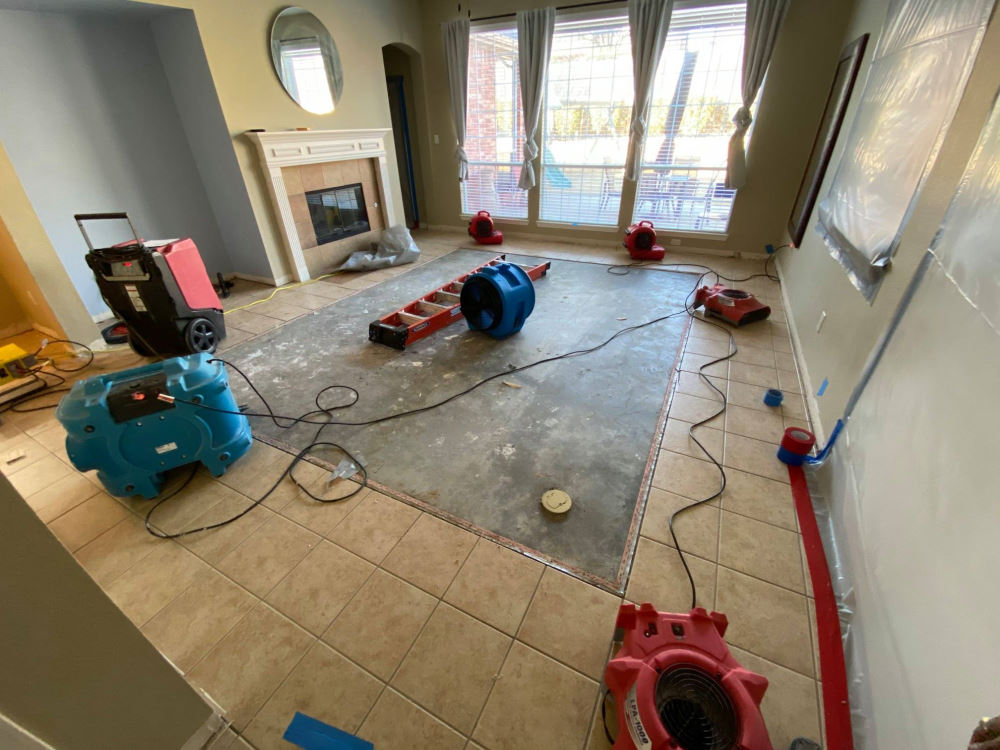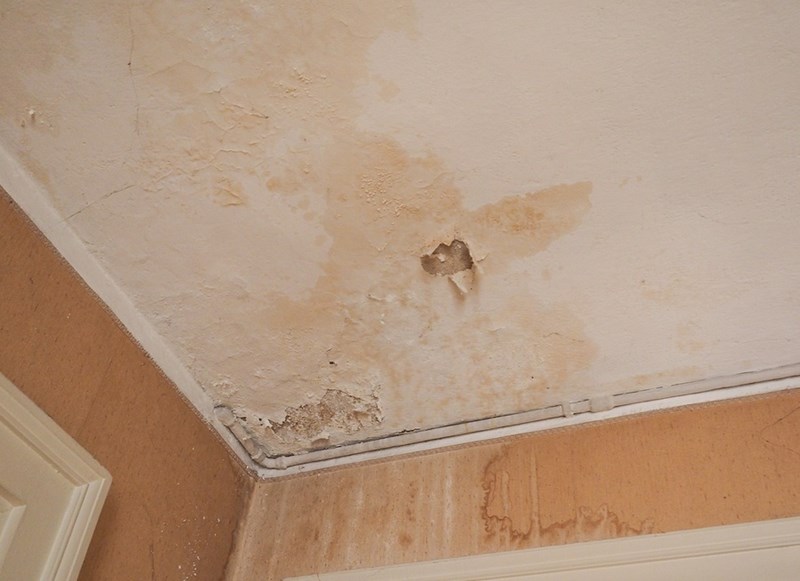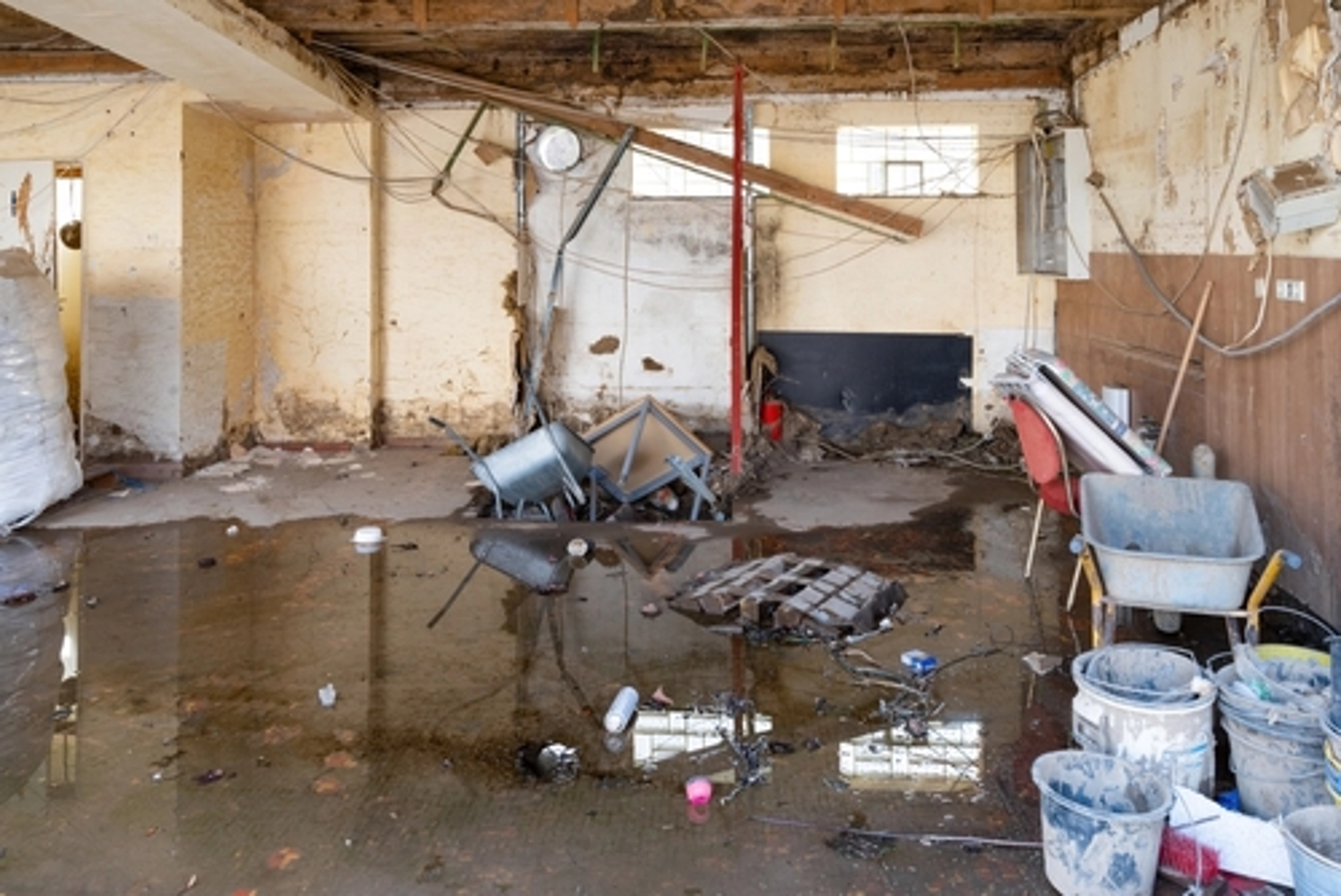Trusted Water Damage Repair Services for Residential and Commercial Properties
Trusted Water Damage Repair Services for Residential and Commercial Properties
Blog Article
The Refine of Water Damage Cleaning: Ensuring Your Home Is Restored Successfully
Water damages can be a daunting obstacle for house owners, requiring a careful and structured cleaning procedure to recover safety and security and capability. Originally, a detailed evaluation is crucial to identify the extent of the damages and determine the appropriate removal procedures. Following this, efficient water removal strategies play a pivotal role in alleviating additional damage. The nuances of drying out, sanitizing, and ultimate restoration are similarly essential and commonly overlooked. Comprehending these phases can make a considerable distinction in the outcome of your home's repair, prompting a closer consider what each action involves.
Evaluating the Damages
Upon uncovering water damage, the initial step is to completely analyze the level of the influence. This first evaluation is essential, as it assists figure out the needed actions for reliable cleaning and reconstruction. Begin by inspecting the impacted locations, consisting of wall surfaces, ceilings, floorings, and individual belongings, to determine the resource of the water breach, whether from flooding, leaks, or condensation.
Documenting the damages is crucial for both insurance coverage cases and preparing restoration initiatives - damage restoration services. Usage pictures and created notes to record the intensity of the damages, keeping in mind any type of afflicted structural components and products. Pay special attention to areas that might not be immediately noticeable, such as behind wall surfaces and under rugs, as hidden moisture can lead to more difficulties, consisting of mold and mildew growth
Furthermore, examine the timeline of the water exposure. The longer the materials continue to be damp, the higher the possibility for damage. Understanding the duration of exposure will inform the urgency of remediation initiatives. Eventually, a thorough assessment prepares for a successful water damages cleanup process, making sure that all affected locations are attended to efficiently and thoroughly.
Water Removal Techniques

Specialists generally use submersible pumps for larger quantities of water, which can promptly ease flooding in cellars or other impacted locations. For smaller amounts, wet/dry vacuum cleaners are usually used to draw out residual dampness from carpets and tough surfaces. Additionally, using mobile extractors enables for targeted elimination in restricted spaces or areas with fragile products.
In circumstances of infected water, such as sewage or floodwater, advanced extraction methods might entail making use of biohazard devices to guarantee safety and compliance with health laws. High-powered removal tools are crucial in decreasing water retention in architectural materials, which can lead to mold development and structural degeneration otherwise resolved without delay.
Ultimately, the efficiency of water extraction strategies plays a critical function in the overall success of the water damages clean-up procedure, preparing for succeeding remediation efforts.
Drying and Dehumidification
Once standing water has been successfully removed, the following vital phase in the water damages cleaning procedure is drying and dehumidification. This action is important to prevent further damages and mold development, which can occur within 24 to 2 days in damp settings.
To accomplish effective drying, customized tools such as industrial-grade air moving companies and dehumidifiers is used. Air moving companies flow air throughout damp surface areas, enhancing evaporation rates, while dehumidifiers decrease moisture levels in the air, promoting a conducive environment for drying. The combination of these devices guarantees that dampness is extracted from wall surfaces, floors, and home furnishings, allowing them to dry completely.
It is vital to keep an eye on the drying process carefully. Specialists often utilize moisture meters to assess the moisture content in various materials, ensuring that all impacted areas get to appropriate dry skin levels. This thorough method assists to stop concealed dampness pockets that can bring about architectural damage or undesirable mold development.

Cleansing and Sanitizing
After the drying out and dehumidification stage is complete, the next vital step in water damage clean-up is cleaning up and sterilizing the affected areas. This procedure is crucial to protect against the growth of mold, microorganisms, and various other pathogens that thrive in damp atmospheres.
The cleansing phase usually involves eliminating any kind of debris, dust, and pollutants from surfaces using specialized cleaning up representatives. For tough surfaces, find more info a combination of soap and water or industrial cleansing items is usually employed. Soft products, such as upholstery and rugs, might call for extra considerable cleansing techniques, consisting of steam cleansing or deep removal techniques, to guarantee comprehensive sanitation.

Sterilizing follows cleansing, using EPA-approved disinfectants to remove dangerous bacteria. This action is necessary, particularly in locations that may have entered into call with floodwaters or sewage, as these resources can position significant health and wellness risks.
Furthermore, it is very important to deal with any kind of staying smells, which may call for the use of smell neutralizers or advanced strategies like ozone treatment. Correct cleaning and disinfecting not only recover the safety and hygiene of your home yet also prepared for successful repair and repairs in subsequent phases of the water damage clean-up procedure.
Remediation and Fixings

When the evaluation is total, reconstruction initiatives can start. This typically involves repairing or replacing damaged materials, making sure that all job abides by neighborhood structure codes and criteria. For example, if drywall has been compromised, it will certainly require to be gotten rid of and changed with brand-new product. Furthermore, flooring go may need similar that site interest, depending upon the level of water exposure.
It is important to engage experienced restoration professionals throughout this process, as they have the competence to deal with complex fixings successfully. Moreover, they can help minimize prospective future issues, such as mold and mildew growth or architectural instability, hence making sure a habitable and safe living setting. Eventually, reliable remediation and fixings recover the home's stability and enhance its overall worth.
Conclusion
To conclude, the process of water damage clean-up is essential for restoring a home to its pre-damage condition. Each stage, from assessing the damage to executing effective water extraction techniques, followed by detailed drying, sterilizing, and required repairs, plays a crucial function in making sure safety and conformity with structure criteria. Effective execution of these actions not just mitigates instant damages yet also improves the long-lasting honesty and value of the property.
Water damages can be a daunting challenge for homeowners, requiring a organized and meticulous cleanup process to bring back safety and security and functionality. Eventually, an extensive evaluation lays the foundation for a successful water damages cleaning process, ensuring that all affected locations are resolved efficiently and thoroughly.
Reliable water removal methods are important in mitigating damages and protecting against additional problems following a water breach event.In conclusion, the procedure of water damage cleanup is essential for bring back a home to its pre-damage condition. Each stage, from examining the damage to implementing effective water removal techniques, adhered to by detailed drying, sanitizing, and essential fixings, plays a crucial function in guaranteeing safety and conformity with building standards.
Report this page